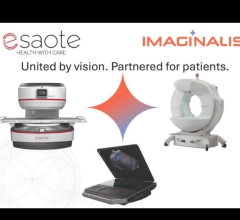
September 18, 2012 — Inpatient hospital treatment accounts for the largest proportion of healthcare spending in the United States, with the use of diagnostic imaging services such as magnetic resonance images (MRIs) frequently implicated as the probable cause. A new analysis finds that the biggest expense may not be from imaging technology, but from supplies including medical devices, such as stents and artificial joints.
“One of the takeaway messages for hospitals is that they should examine their own data in closer detail to explore the costs that are rapidly rising and have a better understanding for the underlying reasons,” said lead author Jared Lane Maeda, Ph.D., of Truven Health Analytics in Washington, D.C.
The study — released in Health Services Research — used the 2001 and 2006 Healthcare Cost and Utilization Project State Inpatient Databases and Medicare Cost Reports for community, non-rehabilitation hospitals in nine states. The researchers conducted a cost analysis on more than 10.2 million patient discharges for various conditions.
At 24.2 percent of costs, “supplies and devices,” (defined as the “supply items required for patient care”) were the leading contributors to the increase in average cost per discharge. Intensive care unit charges contributed 17.6 percent, and room and board for a semi-private room was 11.3 percent. Imaging, such as computed tomography (CT) scans, and other advanced technological services contributed just 4.9 percent. The significant growth in the mean cost per discharge of supplies and devices suggests they should be examined more closely.
Caroline Steinberg, vice president of Trends Analysis for the American Hospital Association, said the group supports comparative effectiveness research to determine whether new drugs and devices are both clinically and cost effective. “This is an area where more research is needed,” she added. “And as for increased use of the intensive care unit, that is consistent with the trend towards older and sicker patients.”
Maeda added that payers might consider negotiating discounts in areas of care and cost that are growing quickly.
For more information: http://onlinelibrary.wiley.com/journal/10.1111/(ISSN)1475-6773/


 December 15, 2025
December 15, 2025 









